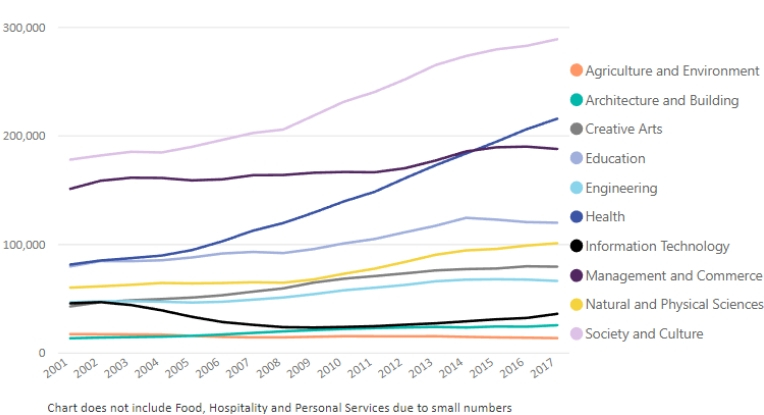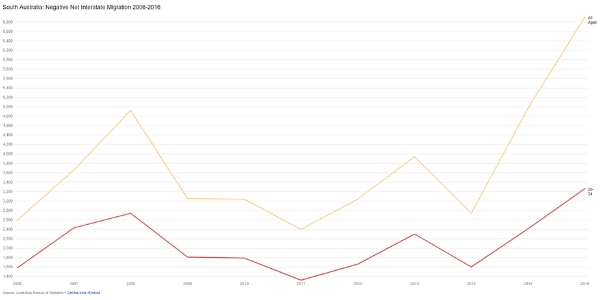Number of students in health disciplines rapidly increasing
James Davis
Recent government higher education statistics reveal that domestic university students in health related disciplines have been rising since 2001. This information comes in the wake of Australia-wide statistics on 2017, which track domestic versus international student proportions, enrolments in special fields like nursing or teaching, and number of stem students nationwide. The breakdowns provide both semesterly and full-year snapshots. For the purposes of this article, graphs provided will only contain year-by-year information between 2001 and 2017 to provide a snapshot of recent times.

Source: Department of Education and Training 2017 Higher Education Statistics
Given the steady employment prospects among these fields and assuming students research these prospects before enrolling in these courses, the numbers make sense. “The health industry and aged care sector is the largest and fastest growing commodity across the country,” said National Rural Health Alliance chief executive Mark Diamond. The 2017 Graduate Outcomes Survey found that between 89 - 95% of undergraduates found full time relevant employment upon graduation.
Reasons for this vary between professions. For instance, the Australian Institute of Health and Welfare found that 15% of Australia’s population (3.7 million) was comprised of elderly people (65 years old or greater), a figure expected to grow to 22% (8.7 million) by 2056. The natural economic consequence of this is greater need for aged care workers and associated health professionals. The problem is exacerbated for smaller states like South Australia where young people, and people in general, are leaving in reasonable numbers for the east coast.

South Australia: Negative Net Interstate Migration 2006-2016
Source: ABS
These figures could shift as health jobs return to the state, but for now it seems inter-state migration will continue sharply rising into the future. This may actually work to the detriment of these fields, however. Just last year, the ABC reported on the number of health graduates being overwhelming in regional NSW. "As an employer we do try to maximise placement opportunities”, empathised Cathy Fulham from a hospital in Coffs Harbour, “but when they apply for graduate positions around the state, there are sometimes thousands of applicants."
The future seems bright for health graduates, but if more students continue filtering through these fields in search of safe employment, we may see an oversupply of graduates across the country. For now, it seems they can look forward to safe job prospects.